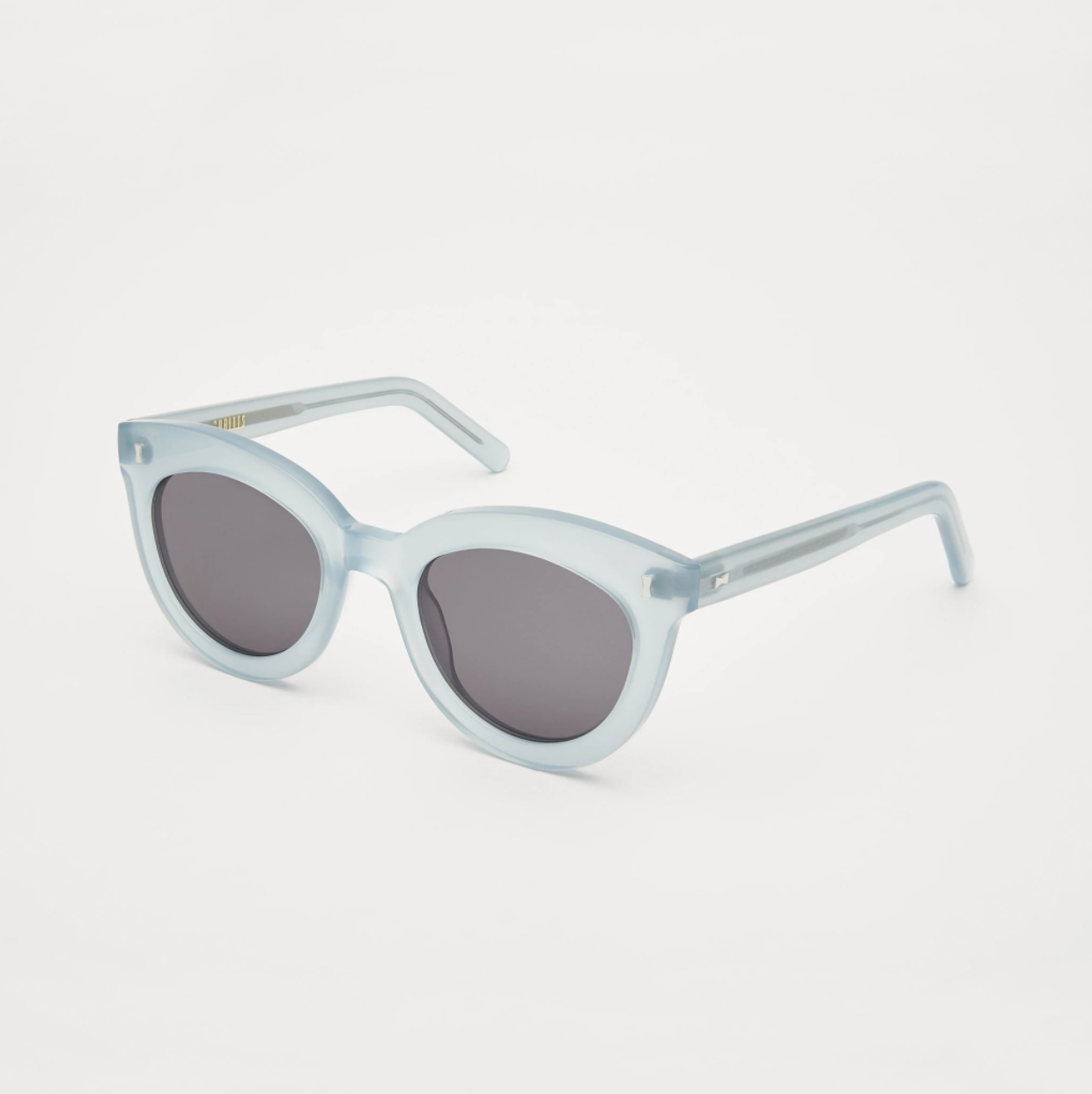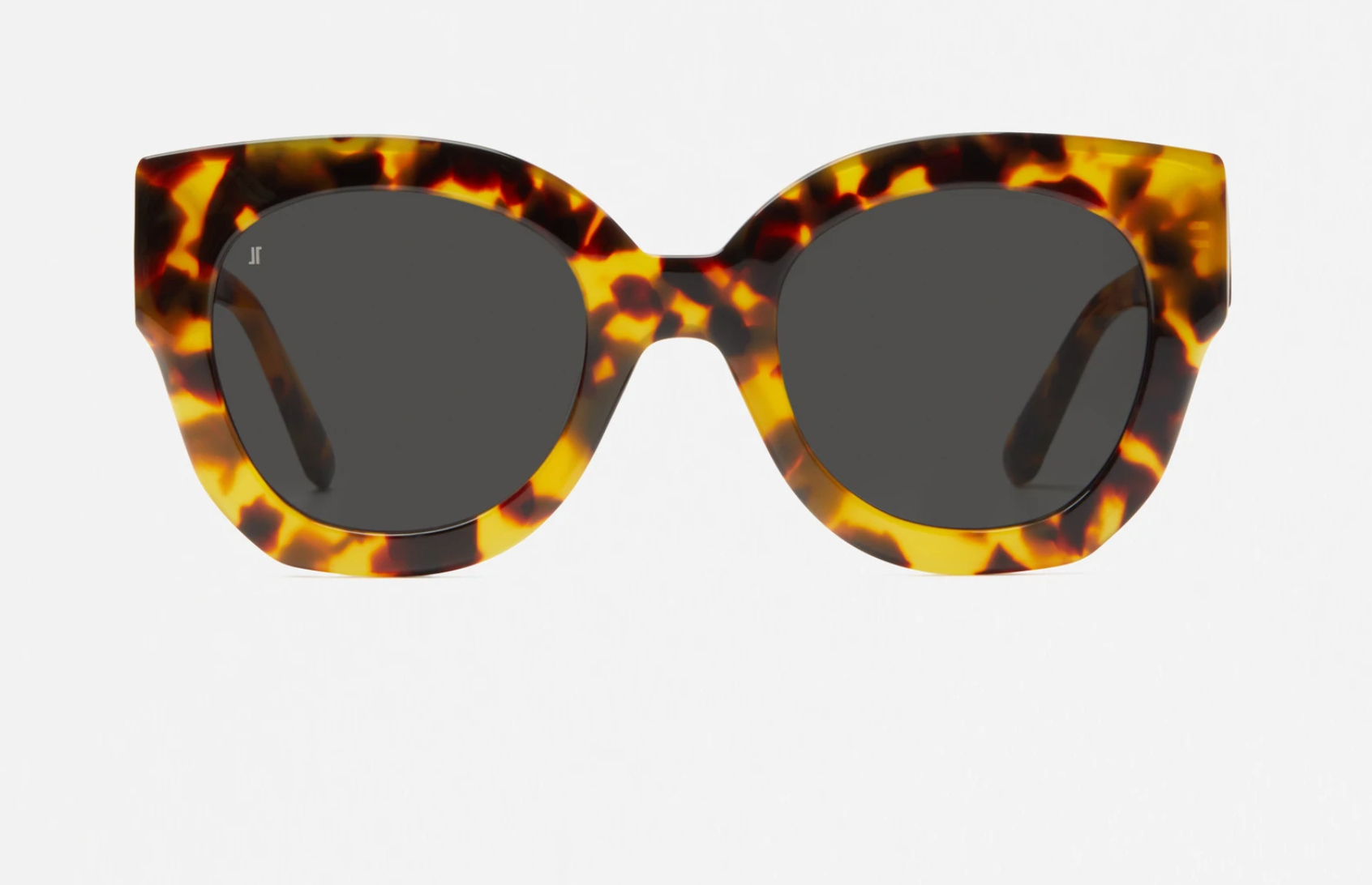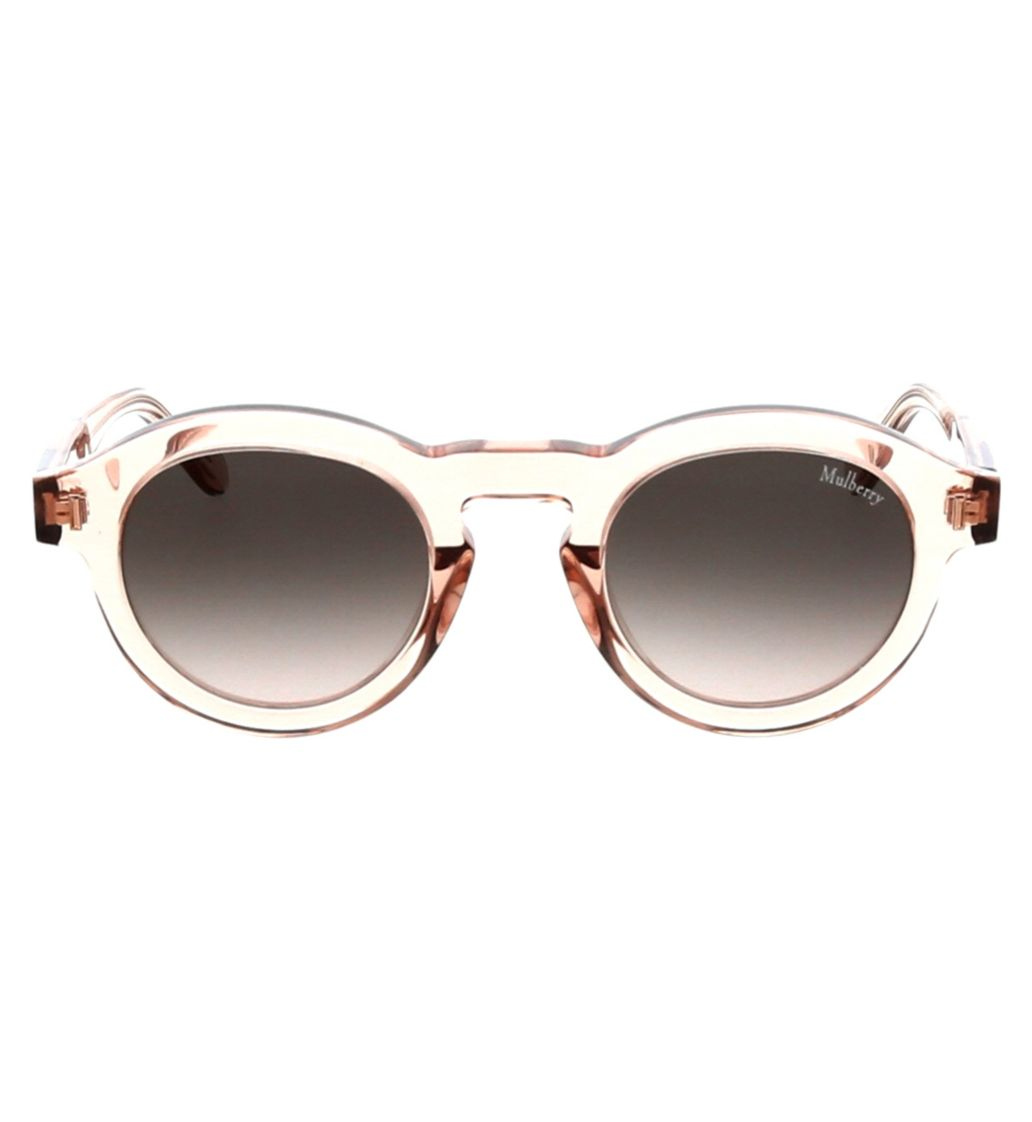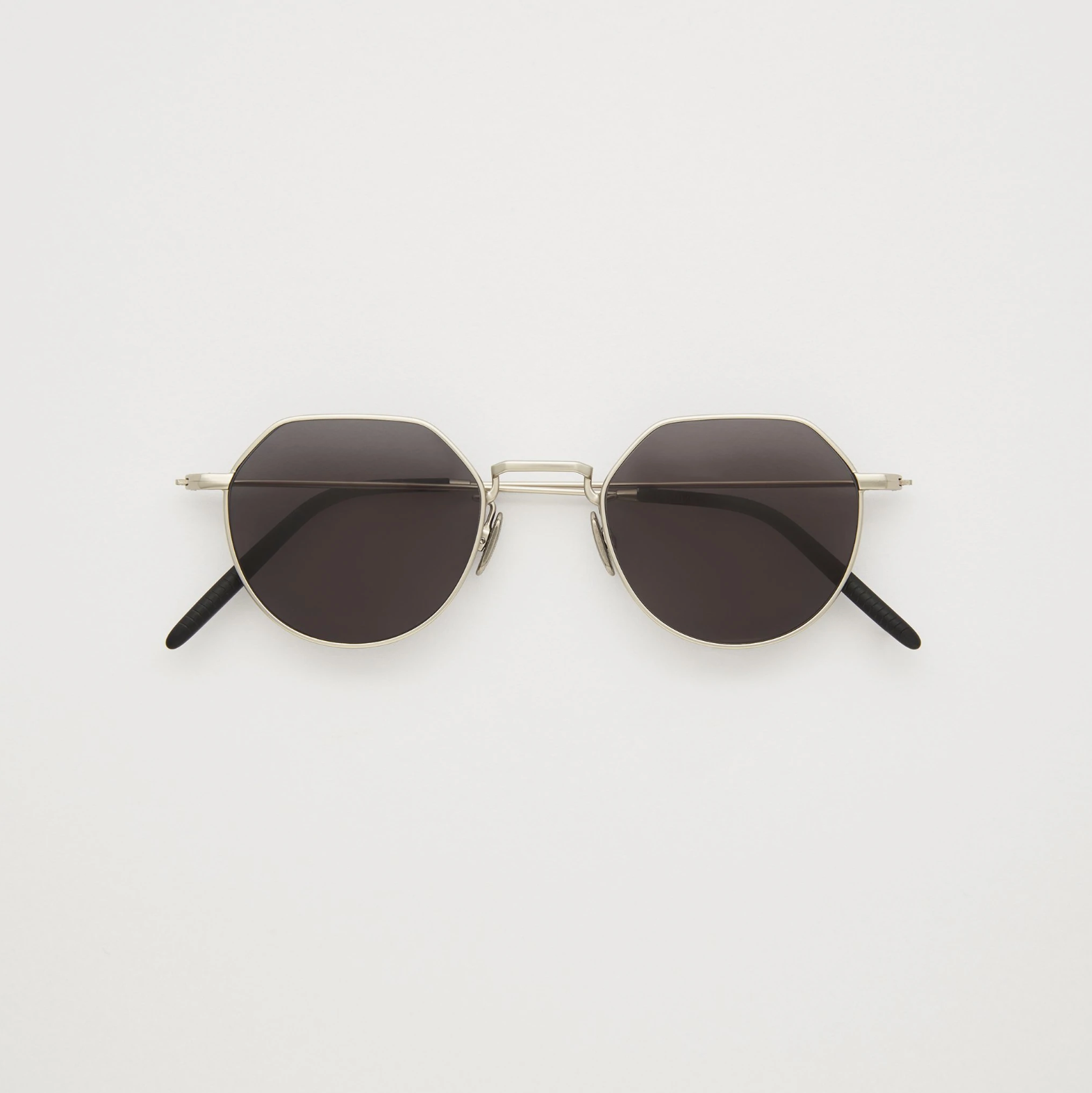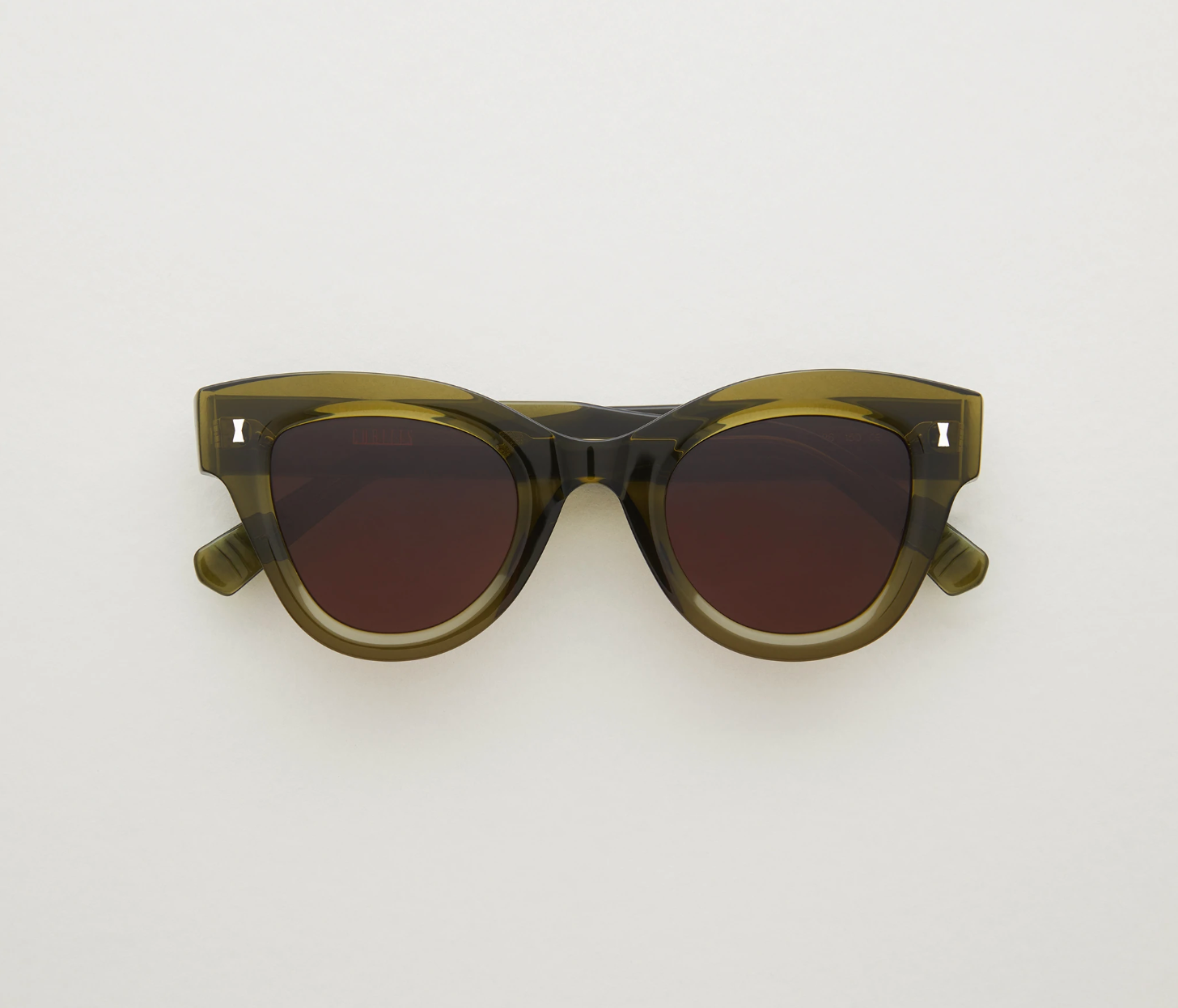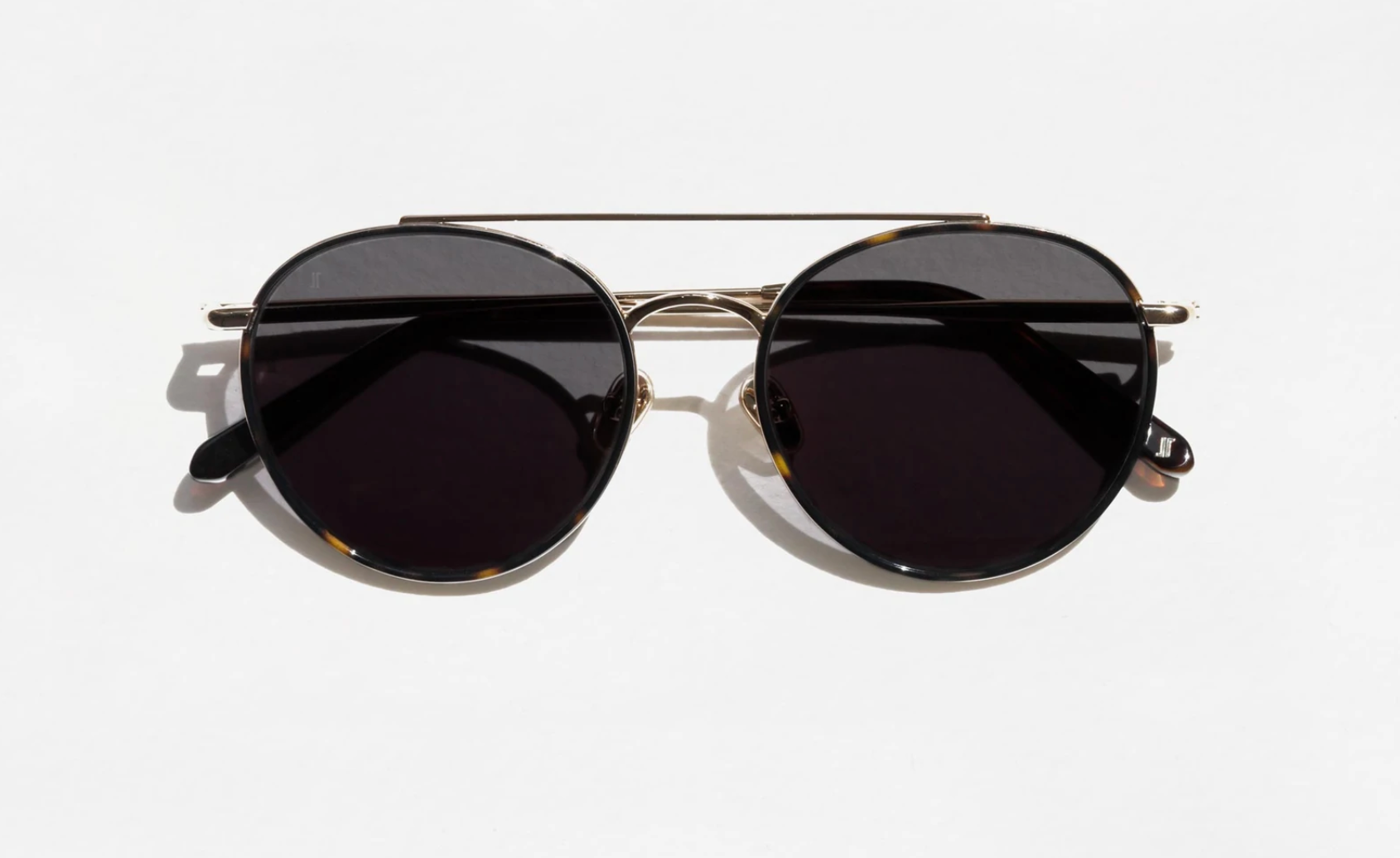I Had Never Really Considered Prescription Sunglasses — Until Now
Designed by Dionne Pajarillaga.
Believe it or not, sunglasses are medical devices. Tinted lenses were invented in the 18th century by James Ayscough and one of their earliest uses, it is claimed, was to alleviate an increased sensitivity to light among syphilis sufferers. Since then, tinted glasses have become the epitome of a chic fashion accessory but their medical use still exists — especially for those of us reckoning with bad eyesight — in the form of clunky, expensive prescription sunglasses.
Despite needing glasses since the heady age of 9, I had never really considered prescription sunglasses. The concept reminded me of dads driving battered people carriers for hours on motorways, or gargantuan bug lenses engulfing two-thirds of an older relative’s face. As a teen in the 2000s and 2010s and an adamant spectacles denier (until recently I wore contact lenses as much as I could afford to), prescription sunglasses felt like admitting defeat and giving into dorkiness. That’s to say nothing of the fact that I couldn’t justify spending more than £15 at a time on tinted lenses.
AdvertisementADVERTISEMENT
As my relationship with my eyesight has changed in the last year (going from a Glasses Avoider to someone who feels the most herself in her frames), I’ve started to renegotiate how I see sunglasses. I’d love to treat them like a pure fashion accessory but there were always things to consider. Most of the time my ability to see in glasses kept me from chucking on a pair of sunnies whenever I felt like it. For that to work, I would have had to carry contact lenses with me at all times, 'just in case the weather turns'. Then there’s the unnecessarily dry eyes from lenses kept in too long, as well as the headaches from the glare and the slightly small Topshop frames squeezing my head. While there was nothing technically stopping me from being a sunglasses girlie, it all felt like too much. And spending £100+ on a pair that also helped me see? Preposterous.
But that was then and this is now. We live in a post-normcore world where people are reclaiming their disability aids as fashion accessories, hearing aids are appearing on ASOS models and old-fashioned, geeky pieces like Coke bottle glasses are chic rather than shameful. As fast fashion becomes ultra fast fashion and accessories are made to feel more disposable than ever, there’s a concurrent draw towards pieces with function that are built to last beyond the next slew of microtrends.
Prescription sunglasses mean that unless you make the big, big bucks, you can’t treat sunglasses like a completely interchangeable accessory come sunnier weather. They are equal parts style choice and medical device, which means considering fit, shape, longevity and prescription before you take the plunge. But equally, sunglasses can be far more of a statement than your daily wear spectacles, giving you room to go a bit bolder and bigger than you might otherwise.
AdvertisementADVERTISEMENT
I spoke to Tom Broughton, founder of Cubitts, and Eve Burns Tait, buyer for frames at Boots Opticians, for advice on choosing size, frame, tint and even thickness to make sure your investment lasts without fading into the background.
Find the right fit
The most important thing with any pair of glasses (sun or no) is getting the fit right, says Tom. "You can have the most appropriate frame for your face," he tells me, "but if it doesn't fit you it's like wearing shoes that are the wrong size." By fit that means even weight distribution around your face and nose, without the frame touching bits of your face like eyelashes or cheeks. If the glasses aren’t comfortable and don’t generally line up with your brow line, they’re going to look and feel 'off'. Fit can be adjusted at home but both Tom and Eve advise trying on and adjusting in person as that will give you the most accurate account of how the frames really fit your face.
Once fit is established, consider the shape. While there are lots of complicated rules about finding the perfect shape for your face, Tom says the only real guidance they use is "offset[ting] the geometry of the face. So if you've got a round face, choose an angular frame; if you've got an angular face, choose a round frame. Because a pair of glasses or sunglasses sits in the middle of your face and it's one of those defining features that you have, the shape guides how someone will look at you."
AdvertisementADVERTISEMENT
Sunglasses come in all shapes and sizes these days but there are four classic shapes from the 20th century that continue to be the most popular across glasses brands. The classic is the panto (round but slightly wider at the top, often with a keyhole bridge), which was popularised in the 1920s and 1930s. The cat eye, designed to flatter the face instead of mimic the movement of your eyes, was invented after the second world war and has been around ever since. Then came the rectangular frame (such as the RayBan Wayfarer) in the 1950s and finally the aviator, which started to get popular in the late 1960s and became coveted for its association with Hollywood.
Why size matters
When choosing the shape for your glasses, Eve emphasises that the choice is always up to the individual. "My main piece of advice will always be to try the frames you’re immediately drawn to first, these will usually be the ones that align with your character and personal sense of style perfectly and that’s what eyewear should be all about." However, as a prescription pair is inherently an investment and the classics are classics for a reason, by exploring these key shapes and thinking loosely in terms of face shape, you’re more likely to find frames that will work no matter how you style them.
Similarly, Eve says that while "bright-coloured frames and non-traditional shapes are great if you are looking for something fun and stylish for the summer, if you are looking to invest in one pair that will see you through many summers and match every outfit, then I suggest opting for a quality pair of simple and classic sunglasses, with an elegant design."
AdvertisementADVERTISEMENT
She adds: "My top tip is that you can never go wrong with a classic pair of black or brown frames for sunglasses — these flatter most skin tones and you don’t have to worry about them clashing with your outfit."
Also be mindful of how your prescription will fit in the frame. People at the worse end of the eyesight spectrum will either have to settle for a thick lens or pay more for thinning. This means that thicker, plastic frames are often better at balancing the weight of your prescription. If you are unsure if you can get metal frames, it’s best to speak to an optician or adviser in store.
Pick your tint
The other factor to consider is the lens itself. G85 (a green shade that has 85% opacity) is the most popular but you can also find grey, brown and blue depending on where you shop. Both Boots Opticians and Cubitts give you the opportunity to customise your lens, allowing you to play into the trend for lighter lenses (as seen with the rising popularity of orange, '70s-inspired lenses) or go for gradients. The shade will affect both the look of the glasses and how you see the world, with warmer colours leaning towards a more saturated view and cooler colours like greys and blues lending a colder tone.
Most importantly, you have to consider the UV protection. In the UK, manufacturers are legally required to have a decent level of UV protection but it’s important to make sure that your chosen pair has the highest level possible as wearing sunglasses without UV protection is actually worse for your eyes than wearing nothing at all.
AdvertisementADVERTISEMENT
"The difference between wearing sunglasses and wearing regular glasses is that the darkness makes your pupils dilate, which means that more light gets into them. So if you wear a pair of sunglasses with poor UV protection, it's like the equivalent of staring into the sun," says Tom.
With all of those pieces in place, you will have narrowed down your choice sufficiently to find the best pair of high-quality prescription glasses that fit seamlessly into your wardrobe — no contact lenses or squinting required.
shop 8 products
AdvertisementADVERTISEMENT







